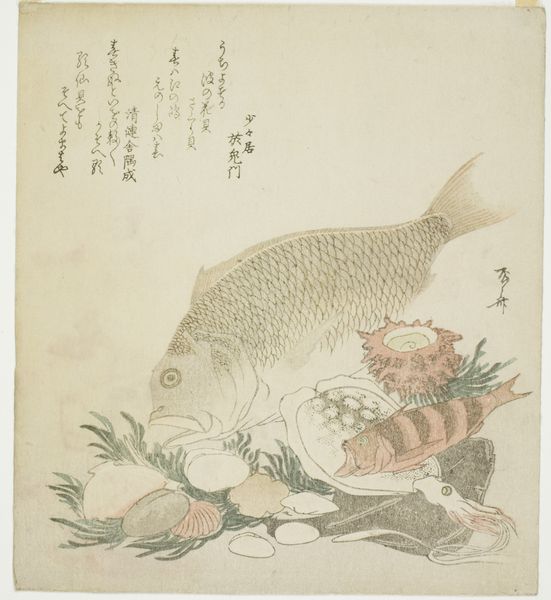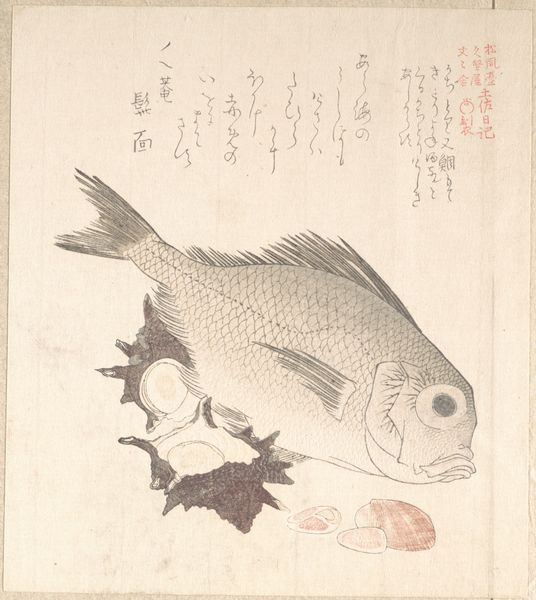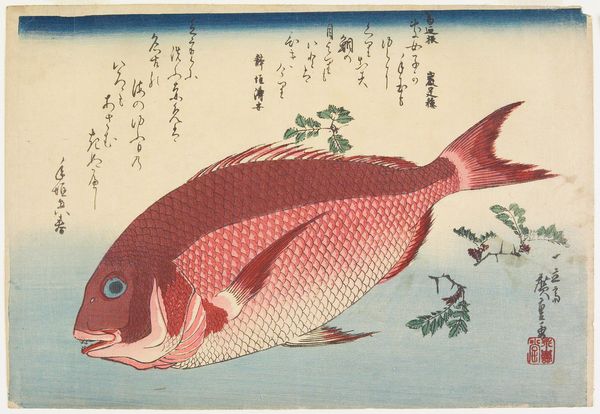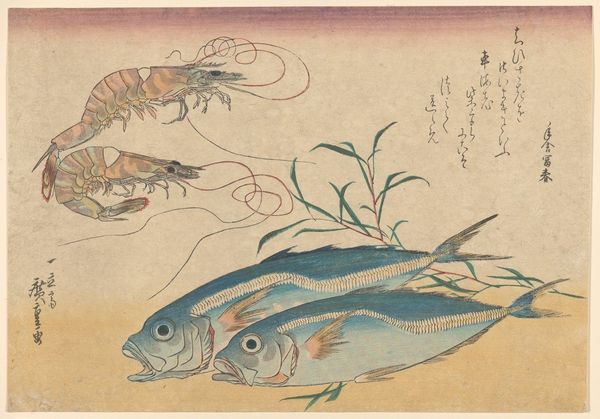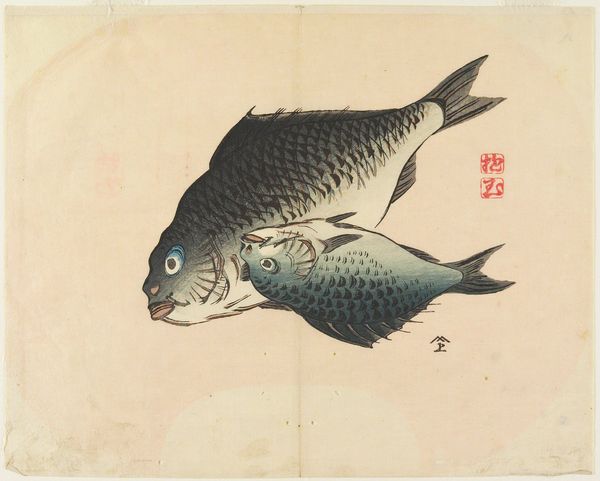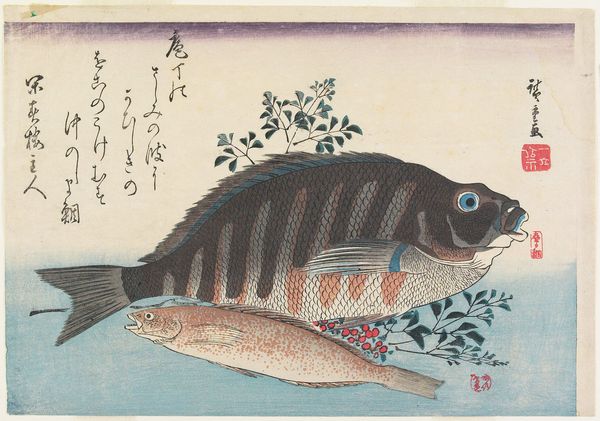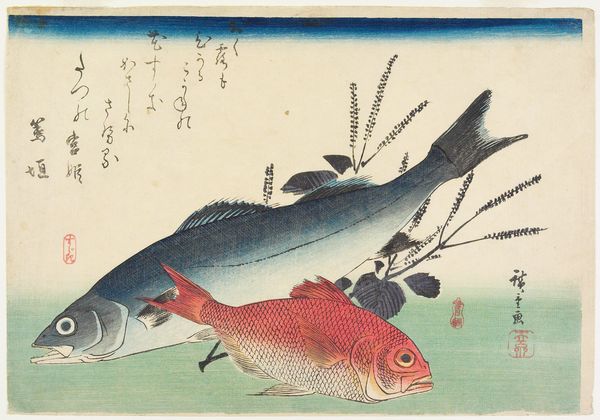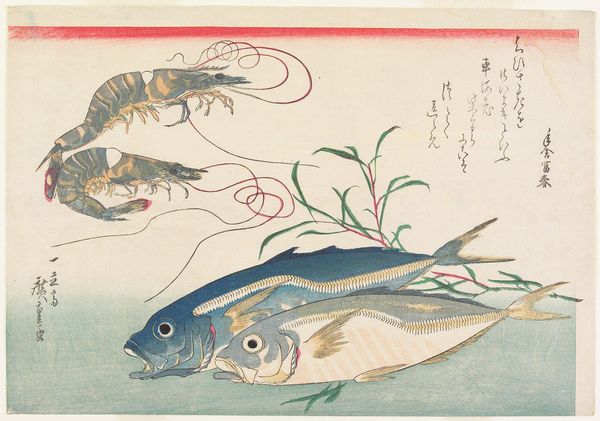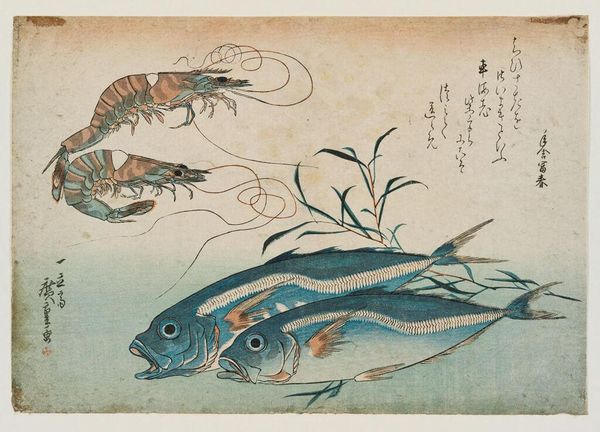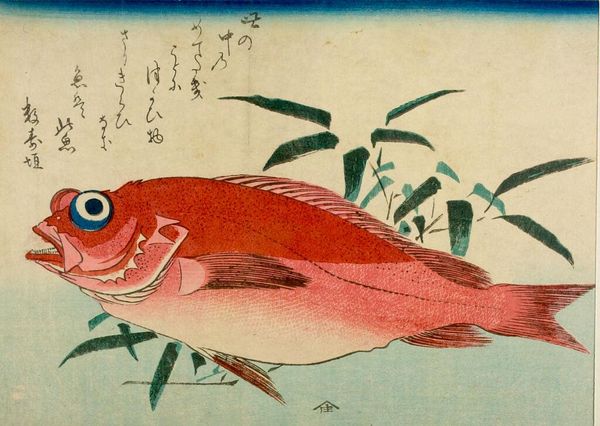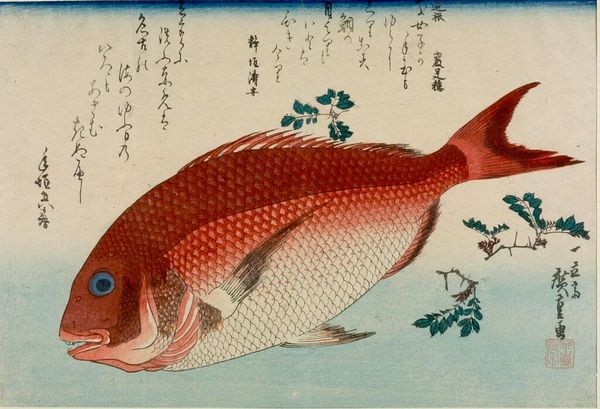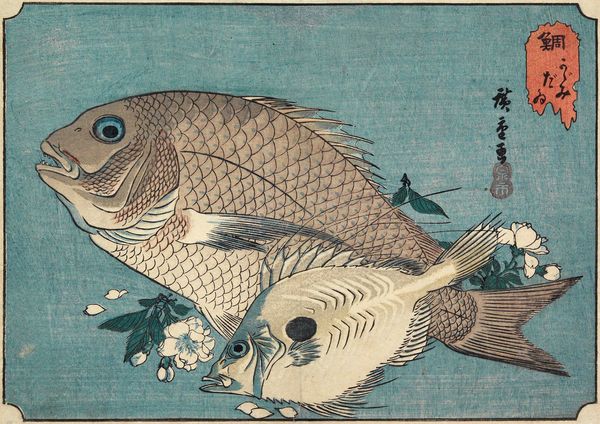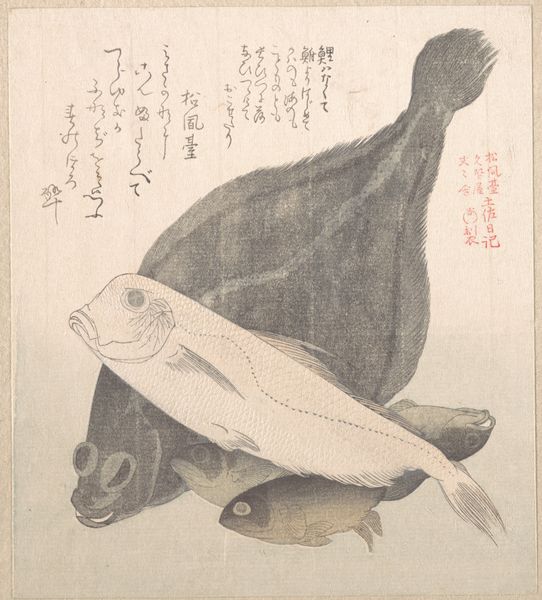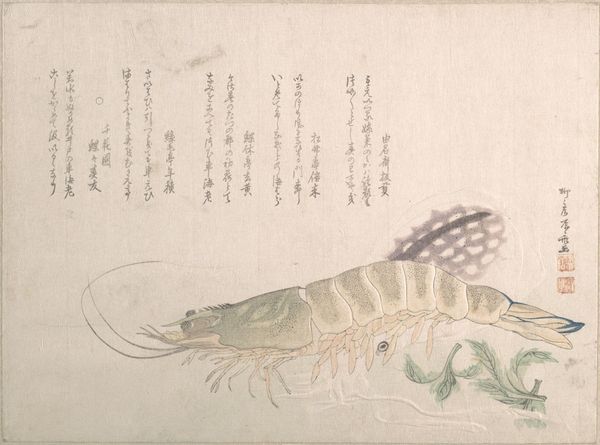
Large and Small Fish Swimming Among Shells and Moss at the Bottom of the Sea 1820 - 1840
0:00
0:00
print, woodblock-print
# print
#
asian-art
#
ukiyo-e
#
woodblock-print
Dimensions: 8 5/8 x 7 5/8 in. (21.9 x 19.4 cm)
Copyright: Public Domain
Editor: This is “Large and Small Fish Swimming Among Shells and Moss at the Bottom of the Sea” by Ryūryūkyo Shinsai, a woodblock print from the early 19th century. There’s a peaceful stillness despite the close arrangement of all these different creatures. What meanings might these specific animals have held? Curator: Observe how Shinsai uses these sea creatures. Fish are common symbols of prosperity and abundance across many cultures. Do you think it’s coincidental he positions the larger fish prominently? Note its size and direct gaze. In Japan, fish have symbolized perseverance due to their ability to swim upstream. Could that be part of the story here, do you think? Editor: Perhaps. I hadn't considered that. What about the shells? I mostly see them as part of a seaside still life. Curator: Shells can represent longevity and were often used as offerings. Here, they form a kind of platform. What about the placement? They aren't scattered randomly. They support, they almost elevate. Think of the symbolic weight of 'foundation' or 'support'. Do those resonate with you as you view this? Editor: Yes, now that you mention it, it adds a layer of respect, as if showing reverence to the sea. Are the moss and seaweed also important? Curator: Precisely! Moss, in Japanese gardens, can symbolize age and the unchanging nature of things. This print blends motifs of both earthly abundance and enduring time, perhaps speaking to a deeper appreciation for life's cyclical nature and its simple gifts. It creates a dialogue between the temporal and the eternal. Editor: It's fascinating how many layers of meaning are packed into such a simple image. I appreciate seeing the enduring connections of the symbols, even today. Curator: Indeed! These visual languages speak across time, reflecting enduring human values. I think about our own current memory of this piece—the history _it_ now has.
Comments
No comments
Be the first to comment and join the conversation on the ultimate creative platform.
